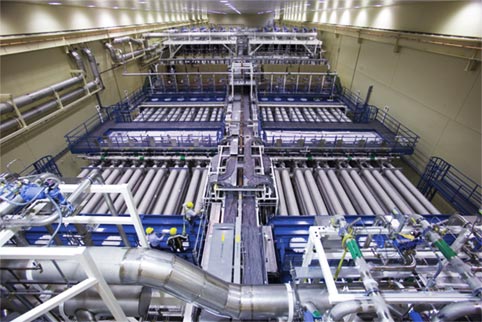Big science in a small space
The National Ignition Facility (NIF) at Lawrence Livermore in California was designed with a specific goal: to use high-powered lasers to ignite a fusion reaction that releases more energy than the one million joules needed to start it.
Now, in a pair of papers appearing in Physical Review Letters (Kline et al. and Glenzer et al.), scientists at NIF are reporting some of the first tests at the new facility. In experiments that simulate “real” conditions more closely than any previous attempt, the team shows they are able to successfully generate the almost sunlike levels of heat needed for laser-driven fusion.
The planned target of NIF’s lasers is a pill-sized hollow gold target, called a hohlraum, that encases a “fusion capsule”—about micrograms of solid deuterium-tritium mix, surrounded by a light material. Heat from the lasers generates a symmetric bath of x rays inside the hohlraum, causing the nuclear fuel to implode and drive a rapid thermonuclear reaction before the pellet blows apart.
As a test, the NIF team used plastic capsules filled with helium instead of nuclear fuel. Combining measurements with computer simulation, Kline et al. and Glenzer et al. showed the hohlraum converted nearly of the laser light into x rays and reached an interior temperature of more than ( million degrees Celsius), which is high enough to ignite the implosion needed for fusion to occur.
If laser-driven ignition at NIF proves successful, it would play an important role in energy research and the study of the structure of stars. – Jessica Thomas





